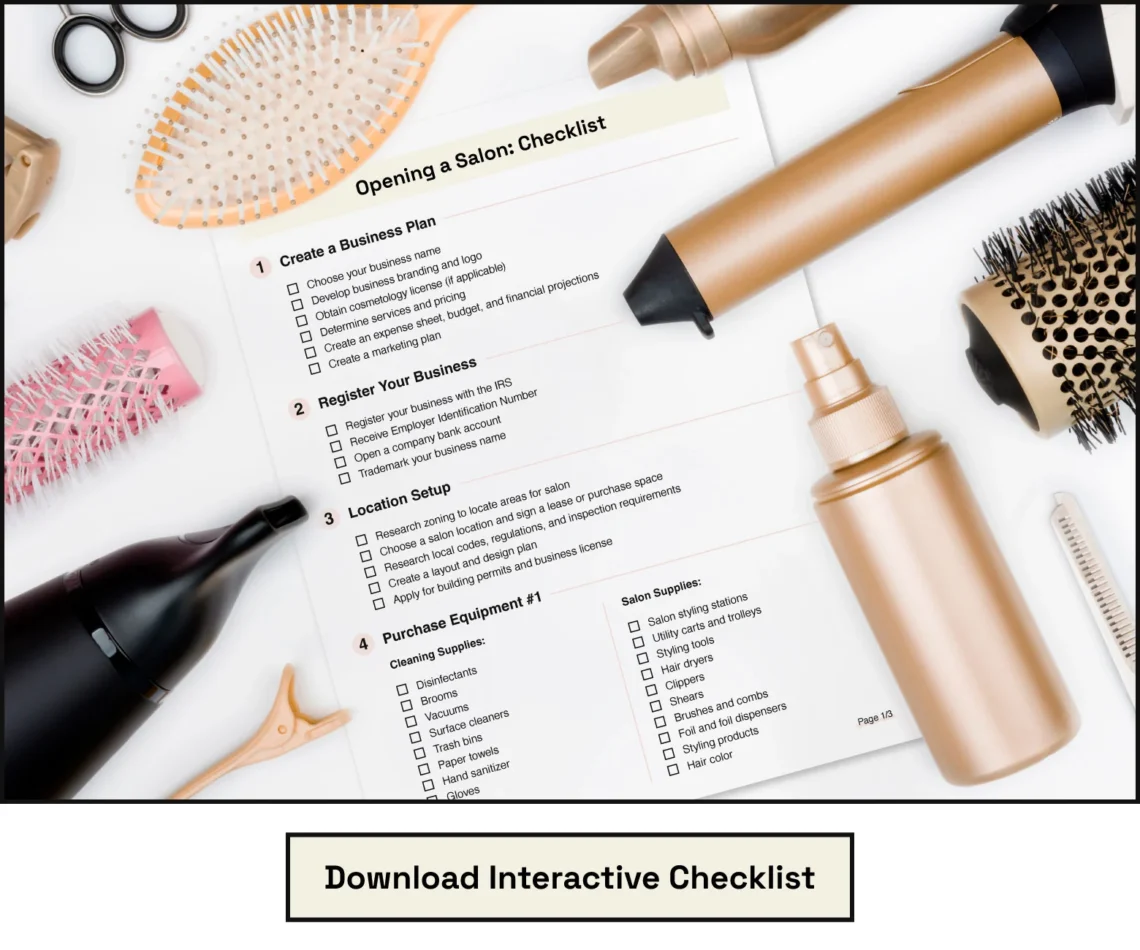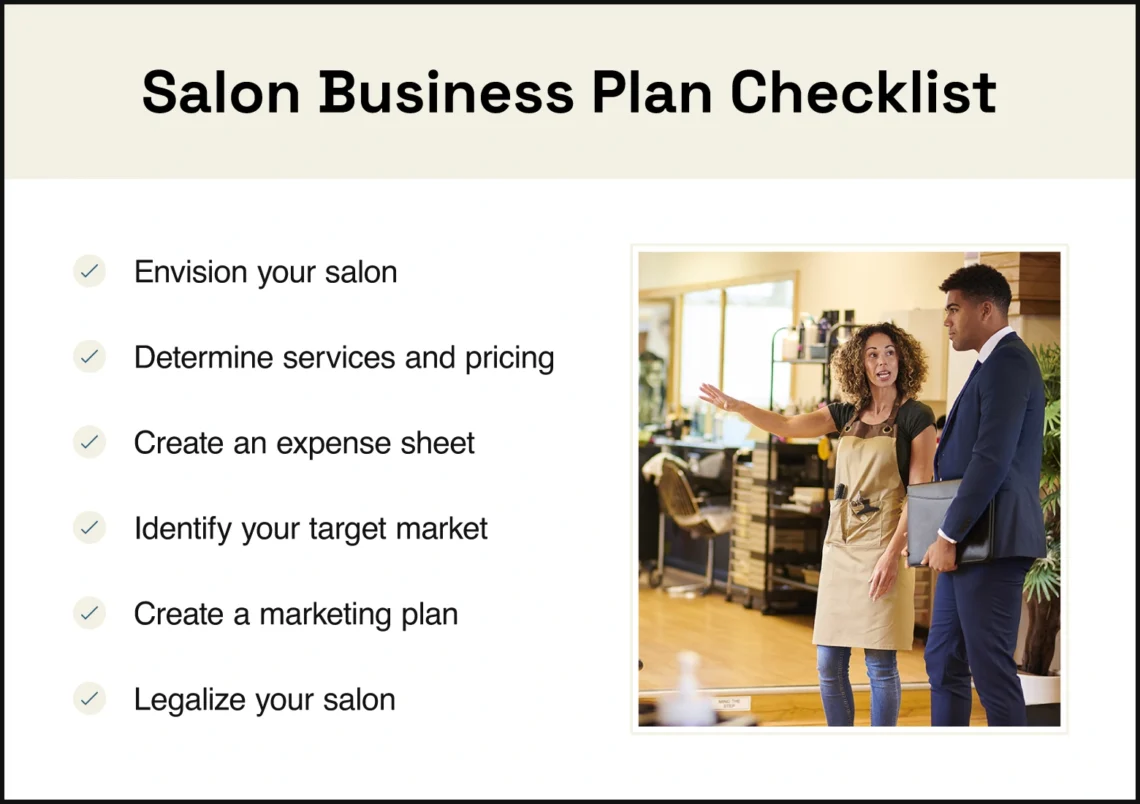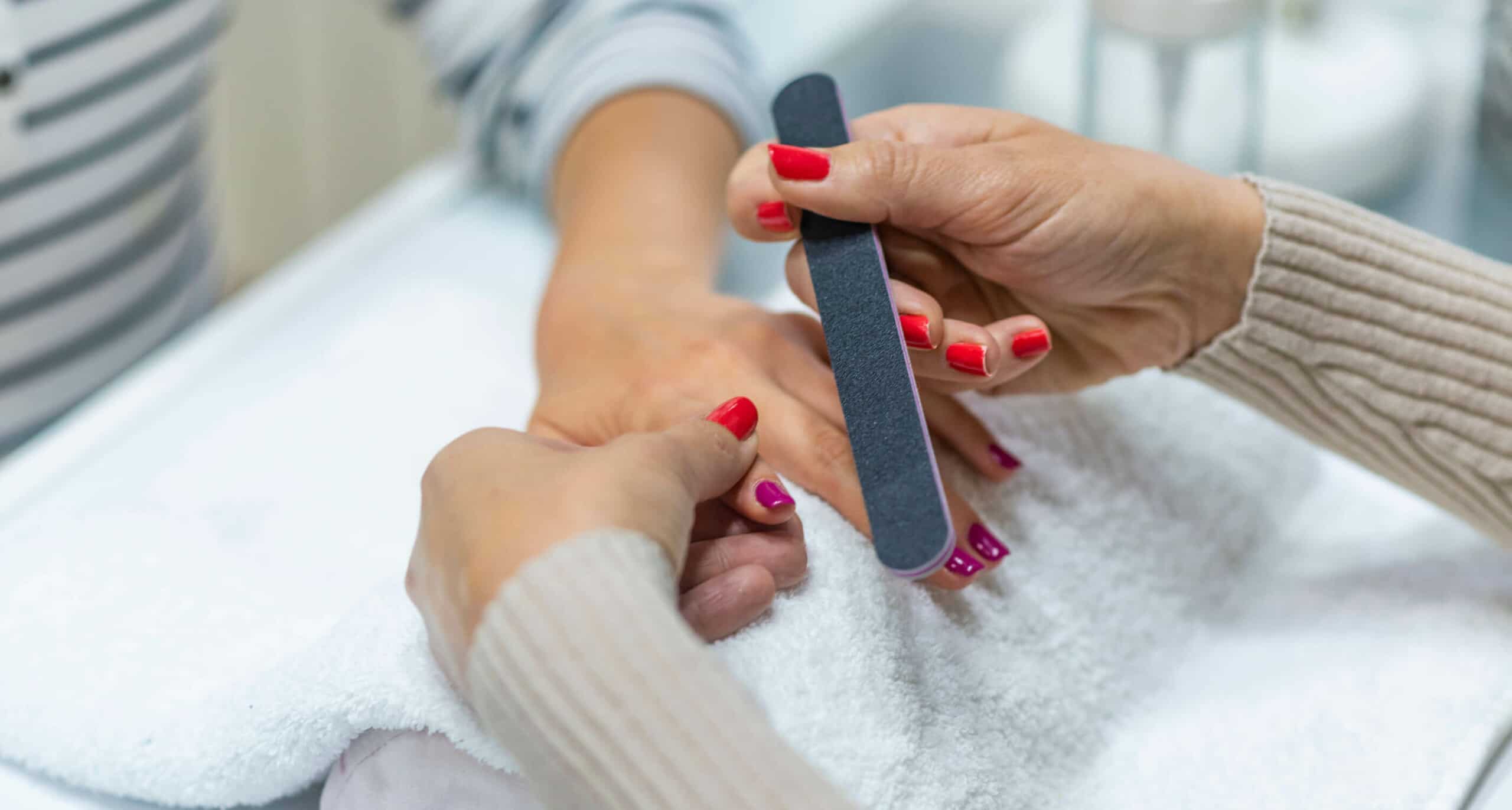Opening a Salon Checklist: 9 Efficient Steps for a Successful Opening

After months (maybe years!) of consideration and daydreaming, you’ve finally decided it’s time to open your own beauty salon. This is an exciting time, but it will take lots of research and planning to see your dreams become a reality.
That’s why we’ve created a step-by-step guide on opening a salon. From deciding on your salon location to hiring professional stylists for your team, we’re here to help you in every part of the process.
Please Note: This post is for informational purposes. If you have any questions regarding your business, we strongly encourage you to consult a legal professional or business advisor.
Salon opening checklist
Download our interactive checklist, save to your computer and check items off as you go.

Opening a salon is no easy feat, and we know there’s a lot to get done before the big opening day. That’s why we’ve created an easy-to-follow salon opening checklist. It includes all the steps you’ll need to take, plus a list of equipment you’ll need to purchase for your salon.
How to open a salon in 9 steps
Our printable guide provides a detailed look at tasks you’ll need to accomplish before opening your salon. The steps below will provide more insight and lead you through the checklist.
1. Create a business plan

The first step to opening a salon is building a business plan. This is the foundation of your salon and will help ensure that your business will be profitable.
- Establish your salon: Create an effective mission statement that resonates with your values and what you want to accomplish with your salon. This will also help narrow down what you want your salon to focus on and will help guide your decision-making throughout this process.
- Determine services and pricing: Decide what services you’ll offer in your salon. Research other salons in your local area and their pricing of similar services to determine the appropriate pricing for your salon. When calculating your pricing, be sure you’ll be making a profit but not so much that your prices are unreasonable in your market.
- Create an expense sheet: What equipment do you need to purchase and how much will it cost? How many people do you plan to hire and what are their estimated wages? Along with leasing a location and determining rent, you’ll need to create a budget sheet that details the items you need to buy before setting up your salon.
- Identify your target market: Determine which customers you plan to target for your services. Where do they live? What’s their average income? Do you plan to serve both children and adults? Ask yourself these questions before determining your salon location and hiring.
- Create a marketing plan: Create a budget for what you’re willing to spend on marketing your salon (social media, salon website, etc.). Decide on a time allotment and budget for marketing and advertising.
2. Register your business
Next on your list is to register your business with the IRS. When doing so, you’ll receive an Employer Identification Number, which you’ll use when filing taxes. This is a good time to also trademark your business name to prohibit others from using your salon’s name.
3. Location setup
Your salon’s location can have a major impact on the success of your business and profits. You’ll want to choose a place that’s accessible and visible to your community. An ideal location would likely be on a popular street with plenty of foot traffic. On the other hand, a location you may want to avoid is a building that’s tucked away on a quiet street and difficult to access.
Some of the things you should also consider when selecting a location are:
- Space and square footage: Your space will need to have enough room for all the services you plan to provide and the number of stylists you plan to hire. Keep in mind spaces like a waiting area, front desk, back room, etc.
- Rent, taxes, and renovation costs: It’s important to consider your maximum budget for monthly rent. Not only that, but you’ll want to account for taxes as well as any remodeling projects you plan to complete and their estimated costs. These will vary depending on the location and the condition of the space.
- Licenses and permits: You’ll most likely need a city permit to make any large renovations and changes in the space. Go to your local city’s site or office for more information on business permits.
- Accessibility: Make sure there’s enough parking around the building for your customers. Check if it’s handicap-accessible. If it’s not, be sure there’s room in your budget to make it so that it is, like adding a ramp to the front door.
- Signage: When you’ve decided on your space, make sure you have visible high-quality signage so potential customers can see your salon’s location.
4. Purchase equipment
Now that you have a salon location and generally know what you want it to be, the next steps are making it come to life. This starts with purchasing all the necessary equipment and items you’ll need for a functional salon.
Keep in mind that you should give yourself 8-12 weeks to order and receive all of your items before opening your salon. You should also check your permit/license to see how many stations, sinks, and similar items you’re permitted to install in your space. The lists below and the printable checklist primarily focus on hair salons.
- Cleaning supplies: Having a clean and hygienic space is crucial for not only the safety of your employees, but the safety of your customers. Make sure you’re stocked up on all the basic cleaning supplies you may need. For hair salons, you’ll also need items like brooms and dusters for sweeping up hair.
- Retail stock: Having retail products available for purchase in your salon is a great way to not only have a higher profit margin, but also support other businesses. Have products from your favorite and most-used beauty lines available for your clients to purchase when they come in for their appointments.
- Salon supplies: Supplies for services are crucial for a well-functioning salon. You’ll need to connect with a wholesale supplier that can provide you with all the products and supplies you need. Going to industry trade shows is another great way to meet other vendors and learn about new products in the beauty industry. Check out our salon supply checklist to ensure your basics are covered.
- Shampooing and processing stations: Along with styling stations, you’ll also need equipment for backwash stations and processing stations for hair services. Make sure you have enough of these for the number of clients you plan to have in the salon at any given time.
- Reception area: This area is the client’s first impression of your salon. Make sure this space is comfortable and welcoming for guests as they wait for their appointment. Making the space aesthetically pleasing is also important for advertising and sharing pictures on social media.
Ashley Mecham, a StyleSeat hair stylist, says that the most important equipment to have in your salon is a booking and payment system that keeps records of earnings and inventory to keep your team organized and on-schedule.
“Your talents and level of service will take you very far, it’s about staying organized that makes all the difference.”
Ashley MechaM, Hair Stylist
5. Remodel and install
It’s finally time for the fun stuff. Before the grand opening, you’ll need to renovate and decorate the space to not only fit your needs, but also match the overall aesthetic of your business. Some of the renovations and installation work may require professional help, so be sure to hire individuals who have commercial building experience.
6. Pass inspections
After remodels and installation are complete, you’ll need to complete inspections. Your state’s cosmetology board will require you to have your business license, salon license, beauty service license, as well as meet sanitation standards. These standards and required paperwork vary by state, so it’s crucial for you to get in touch with your state board to determine what you need to do before opening your salon. If you follow your state regulations closely, you should be able to pass inspections with ease.
7. Recruit stylists
Hiring your dream team isn’t only important for the success of your salon, but the overall dynamic of the workplace. Take your time in the hiring process and really vet potential stylists.
- Advertise job opportunities: Placing hiring advertisements on popular beauty job boards and on your social media are easy ways to let your target market know you’re hiring. You should also ask your social network to share your posts to grow your outreach even further.
- Vet stylists: Once you start receiving interest in your available roles, take your time researching each potential employee. Take a look at their qualifications, past work, their target clientele, etc. If you feel like they would be a good fit for your salon, it’s time to set up an official interview.
- Conduct interviews: Interview processes allow you to get to know your potential employee and allow them to showcase their skills. Ask them to do a test service on a model to evaluate their skill level. In the interview, narrow in on culture and workplace questions to get a good read on whether or not they would fit in with your team and be a good representation of your salon.
- Set up payroll: You need to be able to pay all your employees in a legal manner. There are a variety of payment structures to choose from, including hourly, commission-based, and annual salary. You’ll need to connect with a payroll company or use payroll software.
8. Advertise your salon
Once you begin prepping your salon for opening, you should also be establishing your digital presence. Here are a couple things you should focus on when advertising your new business.
- Create a website: Creating a website is a great way for potential clients to get in touch with you and see what services you provide. You should include service pricing, as well as an appointment booking page for those interested in getting a service appointment.
- Create social media pages: Having business pages on popular social media platforms is another way to not only advertise your business, but connect with new customers and potentially new employees. You can share photos of services, upcoming events, and retail products you have available for sale in your salon.
- Create print advertisements: Although digital advertising has become more popular in the last few years, print advertisements are also a great way to locally advertise your salon. Hand out advertisements to local small businesses and nearby stores to hang on job posting boards or event bulletin boards.
9. Opening day
It’s time to finally celebrate and plan your big opening day! Here are a few ideas you can use when planning your opening day events.
- Create buzz: You’ve spent so much time and work getting your salon ready, and you deserve some recognition. Let local newspapers and news stations know about your grand opening event. Post on your social media pages about the event and what can be expected. Remember to invite loved ones who support you, as they’re probably just as excited as you are to see you open up your own business.
- Host giveaways: Another strategy to get people to come to your event is hosting giveaways, raffles, and drawings. Give away products, services, and gift cards to help bring in new customers.
- Offer refreshments: Offering refreshments and small bites for your guests is a great way to keep people coming and staying throughout the event.
Salon success story
StyleSeat stylist Ashley Mecham has an Aveda background and after being 10+ years in the industry as an employee, she wanted more control over offering a more customizable client experience and executing her expectation of service. She found her success in innovation and service.
“In an industry that is always evolving, you never want to get complacent or stale. I have created international relationships within the industry that have opened doors of education, formulating color lines, working with chemists, and experiencing new haircare!”
Ashley MechaM, Hair Stylist
For those interested in opening their own salon, Mecham says it’s important to create a cohesive culture amongst your team.
FAQ
Here are more commonly asked questions on opening a salon.
What are some management tips for new salon owners?
Managing a business is no easy feat, but having the proper management tools and structure will set you up for success. Ashley Mecham recommends having a user-friendly booking platform that has clear reports. Understand profit and loss, overhead expenses, and a strong formula for pricing. Structure is key!
“Always show up as a professional and never forget that you can do this! Push beyond your comforts, put yourself out there and be a leader and an inspiration to others.”
Ashley MechaM, Hair Stylist
What is the startup cost of opening a salon?
The cost of opening up a salon can be anywhere from $100,000 to $200,000 on average. This number will vary depending on your salon’s location, size, renovations, and other factors.
Ready to open your own salon? We’re here to help you every step of the way. Connect with our community of hairstylists to learn more about running a successful salon.



